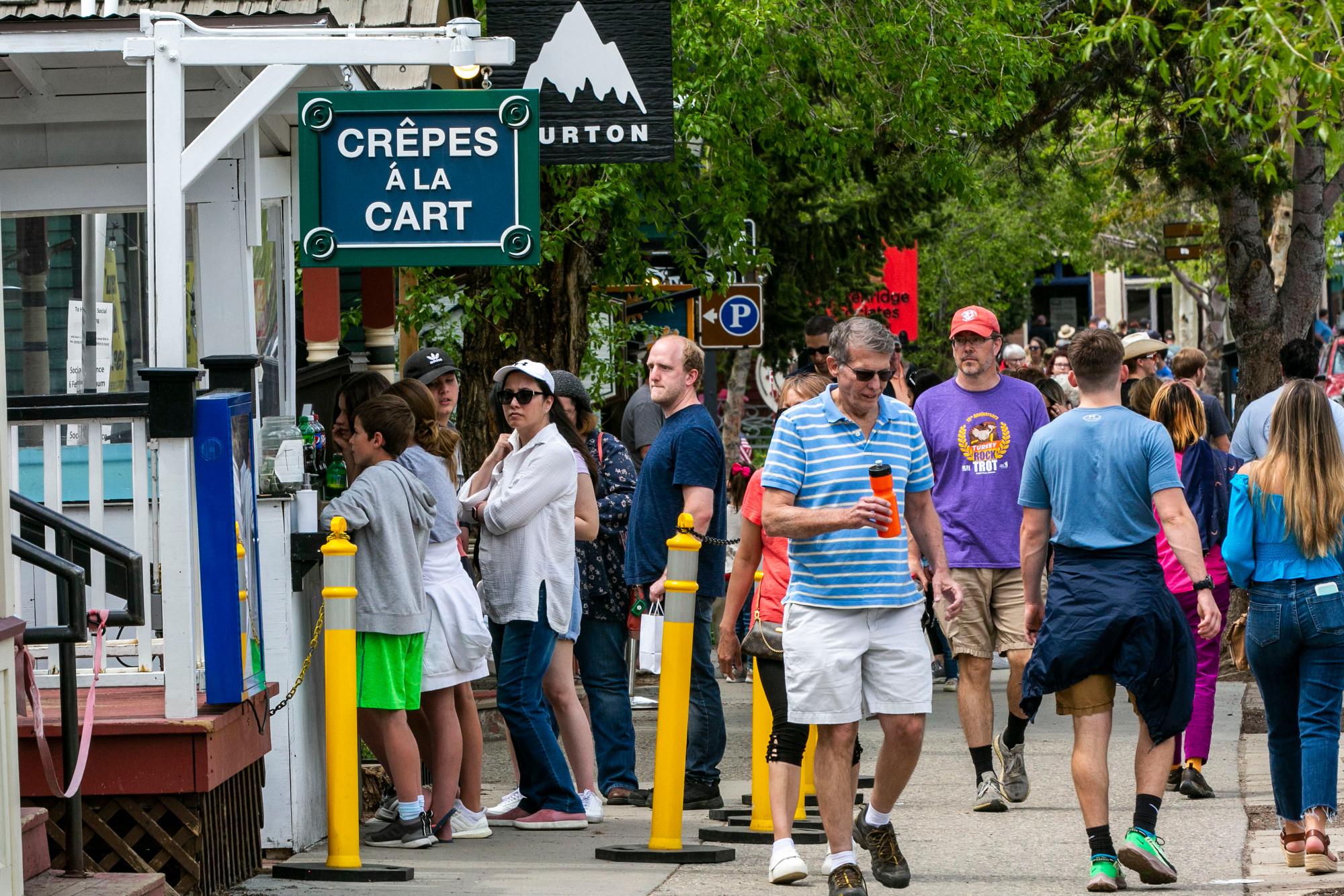
Colorado’s resort lodging properties are already locking in big revenue gains well ahead of peak season, a sign that people are splurging on travel again.
Room prices for the month of December in the state’s mountain towns are up more than 40 percent compared to 2019, according to DestiMetrics, a unit of Inntopia, a travel marketing firm. That equates to about $720 a night on average. The data set includes hotels, condos and professionally managed rental properties.
As of June 30, Colorado’s lodging properties already had an occupancy rate of 16 percent for December. While that might not sound like a lot, the occupancy rate for the winter holidays is typically between 10 and 12 percent this far out, according to Tom Foley, senior vice president with Inntopia.
A spike in prices is driven by a number of reasons. The trend toward renting larger properties with more privacy that took off during the height of the pandemic appears to be sticking for now, Foley said. Naturally, those types of accommodations often cost more.
“As people reemerged, they started engaging in what I like to call … isolation travel,” Foley said.
On top of that, people that kept their jobs — which is much of the income bracket that frequents ski resorts — saved money by staying home during most of 2020, and are now flush with cash. Many visitors are using credits extended by resorts when pandemic restrictions led to canceled trips, according to Foley, boosting their budgets further.
Hotel occupancy so far for the summer months in Colorado is up about 3 percent compared to 2019. That’s behind the 7 percent bump seen in the broader Mountain West region, which includes Wyoming and Utah. That’s a typical pattern for the warm-weather months, when people flock to established summer destinations like Yellowstone National Park and Lake Tahoe, according to Foley.
Even if summer occupancy rates in Colorado haven’t risen as much as other mountain destinations, room rates aren’t lagging. In Breckenridge, for example, the occupancy rate for the summer is about flat compared to 2019, DestiMetrics data shows. But the average cost of a room is up 43 percent.
Hotel room rates in Colorado — and across the country — are jumping as consumers suffer sticker shock on everything from used cars to gasoline. Economists are debating whether a spurt of inflation is a temporary reaction to reopening the economy or a longer-term trend.
Foley’s group at Inntopia is tracking what happens to room rates throughout the Mountain West closely. The unprecedented economic forces at play in the wake of a global pandemic make forecasting difficult.
“My guess is that this is some version of pent-up demand that’s going to soften as we move forward, but it’s really difficult to say right now because consumer behavior is unique,” Foley said.
- Mountain Town Coffers In These Counties Got A Boost Thanks To City Dwellers Late In The Pandemic
- Colorado Visits To Ski Resorts Lifts Vail’s Revenues Last Quarter
- Mountain Towns Prepare For Large Crowds As Summer Sports And Outdoor Recreation Festivals Return
- Colorado Ski Towns Could See Record Tourism This Summer As Hotel Occupancy Rates Tick Up









